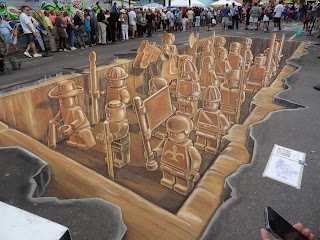·
To Design:
planned arrangement of visual elements to construct an organized visual pattern
o
Content: the concept/subject/narrative
o
Form: manipulation of materials & visual
characteristics
·
All design evolves from point/line/plane
·
Design Principles:
o Unity/Harmony/Simplicity/Emphasis
o Focal Point/Scale/Proportion
o Balance/Rhythm
·
Design Elements:
o Line
o Shape/Volume/Mass
o Texture
o Illusion of Space
o Time and Kinetics(Motion)
o Value/Color
o Virtual Space
·
Design principles and elements work together in
a piece to aid in creating a unified visual.
·
Analysis:
problem solving & communicating an idea
·
Perception:
nature, art history, & culture
·
Material explorations:
visual experimentation, process sketching & building
·
Compare & contrast: 2-D vs. 3-D
o
Things with 2 dimensions possess length &
breadth (but have no depth)
§
We can organize visual elements to create
harmony & unity within a picture plane
o
2-D Design leads to the formation of space,
aesthetic, & intellectual content (included
mark-making, drawing, painting, printing, & writing)
 |
| Street art by By Leon Keer, Peter Westerink, Ruben Poncia and Remko van Schaik |
o
In 3-D the goal is to organize visual elements (to
create harmony & unity) in relation to…
§
Length:
vertical direction: up & down
§
Breadth:
horizontal direction: left to right
§
Depth:
transverse direction: forwards & backwards
o
3-D is defined by x, y, z
§
x = depth
§
y = breadth
§
z = length
o
To obtain a solid understanding of a 3-D
object one must view it from all directions and various distances
























